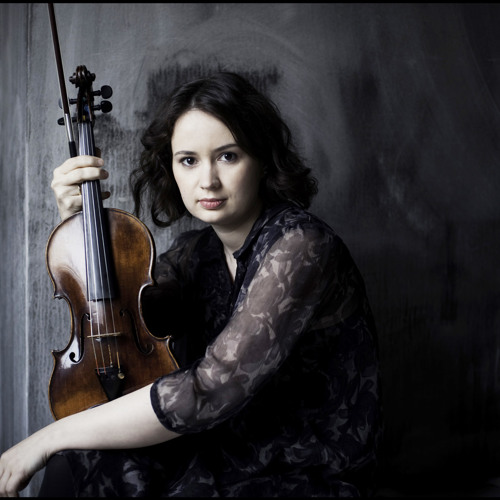Kopatchinskaja sets London Philharmonic concert ablaze with Shostakovich

Reflecting on Saturday’s impressive concert by the London Philharmonic Orchestra in Carnegie Hall, one’s thoughts kept going back to the strings.
Shuddering and slashing in Britten’s Sinfonia da Requiem, drumming in Tania León’s Raices (Origins), carving expressive phrases in Sibelius’s Fifth Symphony, the orchestra’s string sections were a distinctive presence, in their frank way.
The woodwinds, brass, and percussion all had their moments to shine, and conductor Edward Gardner kept the sound in balance all evening. But one was reminded often that, going back two or three centuries, the history of the symphony orchestra begins with ensembles of strings.
So it seemed appropriate that the evening’s biggest thrills came from a violinist.
A concerto is a nice thing to have in the middle of a concert, a change of focus from the ensemble effort to the skills and imagination of one player. But when that player is Patricia Kopatchinskaja in Shostakovich’s Violin Concerto No. 1, things can go rapidly from nice to combustible.
The Moldovan-born violinist stole in nicely enough on Saturday with a simple tune in the concerto’s opening Nocturne, soft and non vibrato, a sort of secret song in a concerto that had to be hidden for years from anti-modernist Soviet authorities. But she and the orchestra took the witty Scherzo at a blistering pace, with syncopations flying in all directions, the animated soloist even turning her back on the audience at one point in a face-to-face duel with the chattering woodwinds.
Timpani, cellos and brass boomed out the theme of the Passacaglia (variations over a repeating bass) before the horns established a church-like atmosphere. The violinist’s musings grew ever more introspective as the variations progressed, but the solo cadenza snapped out of that with lightning scales and string-crossing fireworks, igniting the concerto’s furious Burlesque. Soloist and orchestra players matched hot licks in tight ensemble as the music accelerated to a blazing finish, touching off a long-lasting ovation.

Before the concerto, Britten’s memorial symphony opened the program with a march through deathly hallows in the “Lacrimosa” movement, followed by dancing fury in the scary “Dies irae” (a virtuoso turn for Gardner and his crack ensemble) and finally the “Requiem aeternam,” a slow procession to a long, tender diminuendo. Gardner admirably projected the piece’s Mahleresque orchestral layering and complex emotions.
After intermission, the LPO explored the musical “origins” of the Cuban-born León, presently in a two-year residence with the London Philharmonic, in a single- movement piece it commissioned from her. A few bars of wispy meditation in string harmonics gave way to booming timpani and tom-tom and jitterbugging violins, then a walk in a tropical forest amid glowing low brass and twittering woodwinds.
Latin and jazz rhythms gently lifted the woodsy walk to a complex dance as a high, metallic piccolo note floated above. The piece returned to reflection at the end, dwindling in a haze of vibraphone resonance. The 81-year-old composer strode down the aisle and onto the stage to hail the performers and acknowledge the warm applause.
British orchestras and their audiences, it seems, have always had a soft spot for the chilly ecstasies of Sibelius. On Saturday, a certain restraint kept the Fifth Symphony’s opening string sforzandos and trumpet calls in proportion, allowing the first movement to swell, retreat, and bloom again on a long line. Gardner’s steady direction brought in variants of the themes and a scherzo-like middle section, all in smooth progression to a sonorous finish.
The conductor also found the unifying thread through the intriguing middle movement, with its simultaneous layers of slow and fast, legato and pizzicato. The forthright character of the strings—not silky or lush but just, well, stringy—was especially notable here.
Strings again—this time an eager, anticipatory rustle—ushered in the finale’s great swinging theme for the horns. Gardner made sure this indelible tune was heard, or at least felt, throughout episodes both scherzando and fervent, until it was distilled into six stark, detached chords to close the work.